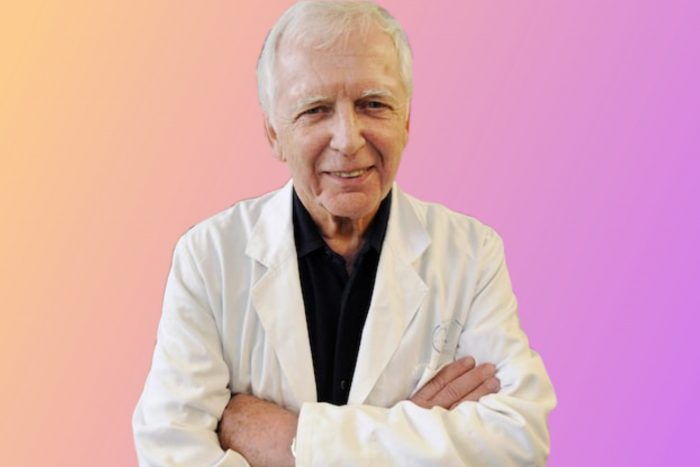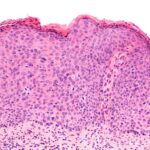
Virologist Dr. Zur Hausen
The medical field is loaded with contributions from brilliant minds that transformed our understanding of diseases and treatments. One such remarkable figure was Dr. Harald zur Hausen, a German virologist. His pioneering research on the human papillomavirus (HPV) laid the bedrock for a vaccine that proved highly effective against cervical cancer. For his revolutionary contribution to medicine, Dr. Zur Hausen was recognized with the Nobel Prize in 2008.
Sadly, on May 29, Dr. Zur Hausen passed away at the age of 87. The German Cancer Research Center in Heidelberg announced the unfortunate news but did not disclose further details.

In the 1970s, when Dr. Zur Hausen started his research, the belief among cancer experts was that factors, such as genetics and hormonal imbalances, were the predominant triggers of cervical cancer. Pap smears had already enabled early detection of the disease, leading to a decline in mortality rates.
During this journey, he faced numerous challenges. For example, there was no established procedure for cultivating HPV in tissue cultures. Furthermore, securing funding for his research was difficult. The popular belief was that HSV-2 is the potential culprit behind cervical cancer.
Dr. Zur Hausen and his team compiled their evidence and searched relentlessly for genetic markers of HPV in cancer cells. In 1984, Dr. Zur Hausen published two seminal studies that confirmed the presence of HPV strains in clusters of cervical cancer cells. The insights gathered from his work encouraged subsequent studies that established a link between HPV and other cancers in male and female genital areas.
In 2006, two years before Dr. Zur Hausen’s Nobel recognition, the Food and Drug Administration approved the first HPV vaccine, recommended for both boys and girls. Current data from the Centers for Disease Control and Prevention indicates that over 75% of American boys and girls under the age of 17 have received at least one dose of the HPV vaccine.
However, global statistics present a different picture. The World Health Organization reported a decline in the percentage of girls who received at least one dose of the vaccine from 20% in 2019 to about 15% in 2021. Cervical cancer was responsible for around 342,000 deaths globally in 2020.
Several factors contribute to this discrepancy in global vaccination rates, including the relatively high cost of the vaccine, growing resistance to vaccines, and societal barriers.
Upbringing Amid the War
Harald Zur Hausen was born on March 11, 1936, in the city of Gelsenkirchen. The city became the chosen refuge for his parents, who were compelled to abandon their home in present-day Latvia during the turmoil of the Russian Revolution in 1919.
In the midst of the war, Gelsenkirchen, being a central point for coal production and industrial activities, was relentlessly targeted by Allied air strikes. The city’s schools had to close down, leading to young Harald spending his days wandering the fields and forests. These early experiences allowed him to cultivate a profound interest in nature and fueled aspirations of becoming a naturalist.
With the conclusion of the war, his family relocated to the northern regions of Germany. Here, Harald Zur Hausen returned to his academic work, which proved challenging after the years spent away from formal education. His scholarly journey led him to the University of Bonn in 1955, where he began his studies in medicine. After that, he transferred his studies twice – first to the University of Hamburg and subsequently to the University of Düsseldorf Medical Academy. He was awarded his medical degree in 1960 and further honed his skills with specialized training in gynecology and obstetrics.
Becoming a Virologist
The mid-1960s saw a significant shift in Dr. Zur Hausen’s career when started working at the Virus Laboratories of the Children’s Hospital of Philadelphia. During this period, he worked with Gertrude Henle and Werner, two virologists who escaped Nazi Germany. Their investigations into the Epstein-Barr virus and its potential link to cancer served as Dr. Zur Hausen’s introduction to the emerging field of tumor virology.
In 1969, Dr. Zur Hausen joined the Institute for Virology as a professor and researcher at the University of Würzburg. His journey then led him to the University of Erlangen-Nuremberg in 1972. By 1977, he became the head of the Department of Virology and Hygiene at the University of Freiburg.
Dr. Zur Hausen’s association with the German Cancer Research Center was highlighted by the Nobel Committee in its announcement of his award. His extensive contributions to the field of cancer research included the publication of a book titled “Infections Causing Human Cancer” in 2006.
Controversy During the Journey
Dr. Zur Hausen’s Nobel prize was controversial. Bo Angelin, a member of the Nobel Assembly involved in selecting the laureates, was also serving on the board of the Anglo-Swedish pharmaceutical company AstraZeneca. This company took over another business that manufactured a key ingredient used in HPV vaccines and drew royalties from the vaccine’s sales. This conflict of interest instigated a Swedish prosecutor to launch an investigation, which did not reveal any misconduct.






